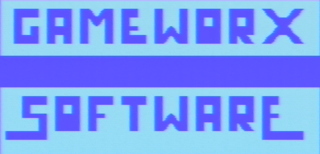Difference between revisions of "Softgold"
From Sega Retro
m (+logo) |
m (Text replacement - "| tseries= |" to "|") |
||
| (One intermediate revision by the same user not shown) | |||
| Line 4: | Line 4: | ||
| founded=1984 | | founded=1984 | ||
| defunct=1985 | | defunct=1985 | ||
| − | |||
| mergedwith= | | mergedwith= | ||
| mergedinto= | | mergedinto= | ||
| Line 16: | Line 15: | ||
On the [[SC-3000]], many of the games feature re-used graphics and sound assets, particularly the opening theme music and the gravestone death screen. When comparing the [[SC-3000]] versions to the more popular Commodore 64 versions, the SC-3000 features more sophisticated graphics by utilising the more powerful drawing (vector-based) capabilities of the SC-3000 hardware, compared to the more character/sprite tiling based artwork of the C64, but the C64 versions experimented with digitised speech in later games, which is lacking from the SC-3000 versions. | On the [[SC-3000]], many of the games feature re-used graphics and sound assets, particularly the opening theme music and the gravestone death screen. When comparing the [[SC-3000]] versions to the more popular Commodore 64 versions, the SC-3000 features more sophisticated graphics by utilising the more powerful drawing (vector-based) capabilities of the SC-3000 hardware, compared to the more character/sprite tiling based artwork of the C64, but the C64 versions experimented with digitised speech in later games, which is lacking from the SC-3000 versions. | ||
| − | After a short period of software releases between 1984 and 1986, Softgold retired from the computer game market. While they were experimenting with more sophisticated hardware, such as the | + | After a short period of software releases between 1984 and 1986, Softgold retired from the computer game market. While they were experimenting with more sophisticated hardware, such as the [[Amiga]], and more elaborate game designs, including an unreleased follow-up to [[The Search for King Solomon's Mines]], the diminishing returns from an increasing saturation of piracy in the marketplace forced an early retirement of the Softgold label. |
Darryll Reynolds remains attached to the industry, creating 3D models, content, and tutorials for modo and vue via his website GameBox Studios. In November 2012, he re-secured the rights to the Softgold label, and is planning to re-release 3D updates of his old software catalogue. | Darryll Reynolds remains attached to the industry, creating 3D models, content, and tutorials for modo and vue via his website GameBox Studios. In November 2012, he re-secured the rights to the Softgold label, and is planning to re-release 3D updates of his old software catalogue. | ||
Latest revision as of 12:49, 19 March 2024
Softgold is an Australian software developer that specialised in multi-load graphic text adventures written in BASIC. The company was originally founded as Gameworx Software before being renamed as Softgold in 1984 - many of the games released on the SC-3000 still retain the Gameworx name during the in-game intros, while the external packaging references Softgold as the copyright holder. The company entity appears to be a front for lone bedroom coder Darryll Reynolds, who appears to have founded and run all aspects of the business, including developing, writing, coding and composing both the music and art of all the adventure games released under the Softgold label.
Since the games were written in BASIC, porting to multiple home computer formats was relatively simple, with ports appearing on the Commodore, Amstrad, MSX, Sharp and Sega series of home computers. The games were mostly sold and distributed in Australia by a third-party agent who specialised in dealing with retail chains ("Computer Classics" published from master tapes and possibly Dotsoft for the SC-3000 - unconfirmed). The games were also distributed in the UK by Severn Software and also the US and New Zealand, but are less well known in those territories.
On the SC-3000, many of the games feature re-used graphics and sound assets, particularly the opening theme music and the gravestone death screen. When comparing the SC-3000 versions to the more popular Commodore 64 versions, the SC-3000 features more sophisticated graphics by utilising the more powerful drawing (vector-based) capabilities of the SC-3000 hardware, compared to the more character/sprite tiling based artwork of the C64, but the C64 versions experimented with digitised speech in later games, which is lacking from the SC-3000 versions.
After a short period of software releases between 1984 and 1986, Softgold retired from the computer game market. While they were experimenting with more sophisticated hardware, such as the Amiga, and more elaborate game designs, including an unreleased follow-up to The Search for King Solomon's Mines, the diminishing returns from an increasing saturation of piracy in the marketplace forced an early retirement of the Softgold label.
Darryll Reynolds remains attached to the industry, creating 3D models, content, and tutorials for modo and vue via his website GameBox Studios. In November 2012, he re-secured the rights to the Softgold label, and is planning to re-release 3D updates of his old software catalogue.
Contents
Softography
SC-3000
- Alien (1985)
- Skull Island (1985)
- The Case of the Mad Mummy (1985)
- The Secret of Bastow Manor (1985)
- Thermo Nuclear War Games (1985)
- The Search for King Solomon's Mines (1985)
- Ninja (1985)
- Murder on the Waterfront (unreleased)

